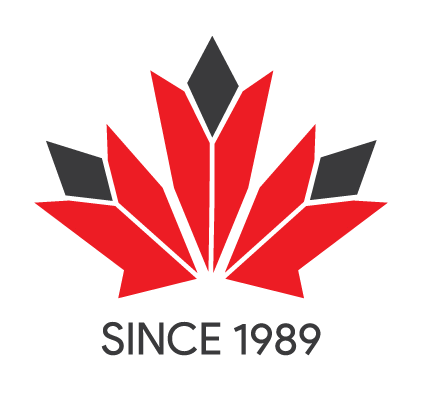How is a Nylon Flag Made?
How are Flags Created?
How are our flags created? At FlagMart Canada, we are passionate about our products. We strive to source the best fabric and we take great pride in our process. All of our flags are made with care in Canada, supporting the Canadian Economy.

5 Steps to Making a High Quality Flag
1. Sourcing
Our nylon is sourced from a North American company. The nylon yarn is woven by a mill and then imported into Canada from the United States. It is tagged and separated based on the printing process it will undergo. Our nylon is UV coated to help it resist fading.
2. Printing
Canada and Provincial flags are sent to our screen printing area. Screen printing is a method of printing an image on fabric by forcing ink onto the nylon surface through a prepared screen of fine material so a pattern is created. This method allows us to force more ink into the material, creating a more saturated material than with other forms of printing. This allows our flags to be durable and remain resistant to fading longer than others.
Screen Printing
Screen printing is done for flags we make in higher volumes and with fewer colours. The Federal and Provincial flags are prime candidates for the screen printing process.
Digital Printing
Custom flags and flags that are produced less frequently are sent to our digital printing section. When we receive an order for a custom flag, we work with the customer to understand their needs. Our graphics team finalizes artwork with them and once our customer approves of the proof we send them; we send their customized flag to the printers.
Using the same UV coated nylon fabric, we use a process called acid dye printing, specific to the flag industry, to digitally print the image onto the nylon sheet. Acid dye printing uses a chemical to allow the dye from the digital print to penetrate through the fabric so it can be clearly seen on the reverse side.
3. Curing
Once a flag’s graphic is printed onto the nylon, whether screen printed or digitally printed, the nylon undergoes a curing process. All of our nylon flags are steamed under pressure after being printed to impregnate the ink within the fabric. This process can take anywhere from 45 min to over an hour depending on the size and colours of the flags. Once the flags have been cured, the richness of the colours comes through.
4. Washing
Our flags then move from the curing phase to the washing phase. All nylon flags are washed thoroughly to remove residual ink.
5. Sewing and Finishing
The flag then moves from our curing department to our finishing department where employees sew the flags. Our flags are quadruple stitched at the fly end to ensure we minimize wear and tear from wind damage. We also use a special woolen white polyester header for the flag as opposed to just sewing in a nylon header so that the flag is reinforced at the header creating a sturdier product. We then sew in either grommets or create a header for rope and toggle as per the customer’s request.
This multi-step process to create a flag for you occurs in Canada, made by Canadians for Canadians.


